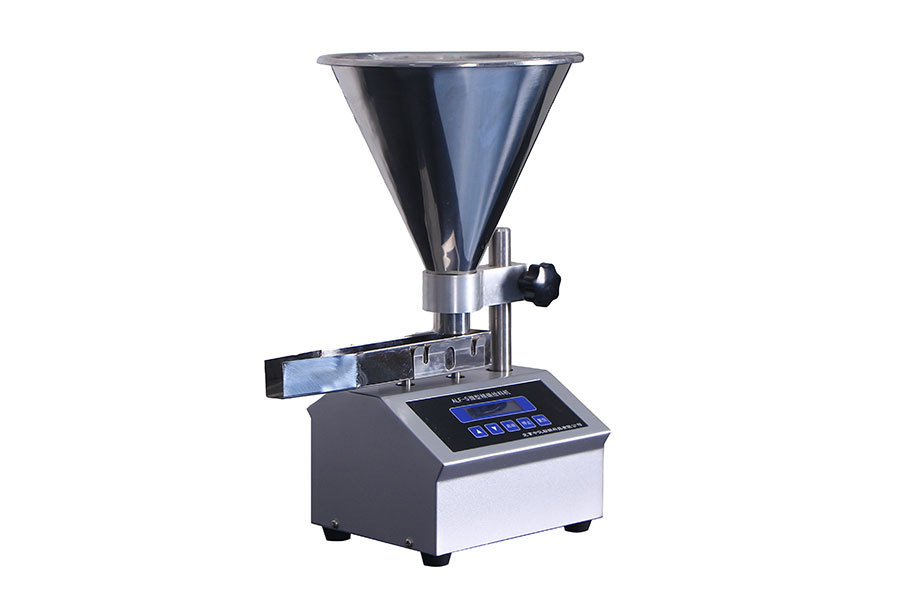Why Your Lab Needs an Advanced Powder Physical Property Analysis System
May 22,2025

In today's fast-paced world of research and development, laboratories are continually seeking ways to improve their efficiency and accuracy. One significant advancement that has emerged in recent years is the **advanced powder physical property analysis system**. This innovative technology plays a crucial role in ensuring the quality and performance of non-metallic materials. In this article, we will explore why your lab needs such a system, the benefits it offers, and how it can transform your testing processes.
Understanding Powder Physical Properties
Before delving into the necessity of advanced systems, it's essential to understand what powder's physical properties are and why they matter. Physical properties refer to the characteristics of powder materials that can be measured and quantified. These include:
- **Flowability**: The ability of powder to flow freely, which impacts processing and handling.
- **Packing Density**: The weight of powder per unit volume, relevant for storage and transport.
- **Particle Size Distribution**: The variation in particle sizes, affects product performance and quality.
- **Moisture Content**: The amount of water present in the powder that can influence stability and reactivity.
Accurate analysis of these properties is essential for industries such as pharmaceuticals, food, and materials science, where even minor variations can lead to significant consequences.
The Importance of Advanced Analysis
Traditional methods of analyzing powder properties can be time-consuming and often lack the precision required for modern applications. Advanced powder physical property analysis systems utilize cutting-edge technology to provide accurate, reliable, and rapid results. These systems often feature:
- **Automated processes** for consistent results
- **High-resolution sensors** for precise measurements
- **User-friendly interfaces** that simplify data interpretation
By integrating such systems into your laboratory, you can vastly improve the quality of your research and development activities.
Benefits of Advanced Powder Physical Property Analysis Systems
Implementing an advanced powder physical property analysis system in your lab presents numerous advantages. Here are some compelling reasons to consider:
1. Enhanced Accuracy and Precision
One of the primary benefits of advanced systems is their ability to deliver highly accurate and precise measurements. Traditional methods can often introduce human error or variability, leading to inconsistent results. Advanced systems mitigate these risks by employing sophisticated algorithms and automation, ensuring that you receive reliable data every time.
2. Increased Efficiency and Productivity
Time is of the essence in any laboratory process. Advanced powder physical property analysis systems significantly reduce the time required for testing. With automated functions, you can achieve results in a fraction of the time it would take using conventional methods. This efficiency translates into increased productivity, allowing your team to focus on other critical tasks.
3. Comprehensive Data Analysis
Modern systems come equipped with advanced data analysis tools that allow for in-depth examination of results. This functionality enables researchers to identify trends, correlations, and anomalies in the data, ultimately leading to better-informed decisions regarding material selection and processing.
4. Improved Product Quality
In industries where product quality is paramount, having access to precise powder physical property measurements is critical. Advanced systems help ensure that your materials meet stringent quality standards, reducing the risk of defects and failures in the final product.
5. Versatility and Customization
Advanced powder physical property analysis systems are designed to cater to various industry needs. Whether you are working with pharmaceuticals, food products, or construction materials, these systems can be customized to suit your specific requirements, ensuring that you have the right tools for your unique testing scenarios.
Key Features of Advanced Powder Physical Property Analysis Systems
When selecting an advanced powder physical property analysis system for your laboratory, it's essential to consider the key features that will best serve your needs. Here are some features to look out for:
1. High Throughput Capability
For laboratories handling large volumes of samples, high throughput capability enables processing multiple tests simultaneously, significantly speeding up the analysis process.
2. Real-Time Monitoring
Advanced systems often include real-time monitoring features, allowing you to track the testing process and receive immediate feedback on results.
3. Integrated Data Management Systems
With integrated data management tools, you can easily store, retrieve, and analyze data from various tests, facilitating better collaboration and decision-making within your team.
4. Compatibility with Various Powder Types
Choose a system that accommodates a wide range of powder materials, from fine powders to coarse granules, ensuring versatility in your testing capabilities.
5. User-Friendly Interface
The ease of use is paramount when selecting a system. A user-friendly interface will minimize the learning curve and allow your team to quickly adapt to the new technology.
Implementing Advanced Powder Physical Property Analysis Systems in Your Lab
Integrating an advanced powder physical property analysis system into your laboratory operations can seem daunting, but with a strategic approach, the transition can be smooth and beneficial. Here are the steps to consider:
1. Assess Your Laboratory Needs
Begin by evaluating your current testing processes and identifying areas for improvement. Consider the specific powder properties that are most relevant to your work and how advanced systems can address these needs.
2. Research Available Options
Conduct thorough research on the various advanced powder physical property analysis systems available in the market. Look for systems that offer the key features mentioned above and align with your laboratory's goals.
3. Consult with Experts
Engaging with vendors and industry experts can provide invaluable insights into the best systems for your laboratory. They can help you understand the nuances of different technologies and guide you in making an informed decision.
4. Plan for Training and Support
Once you select a system, ensure that your team receives adequate training to operate it effectively. Moreover, consider the availability of technical support from the vendor to assist you with any issues that may arise post-implementation.
5. Monitor Performance and Make Adjustments
After implementing the system, closely monitor its performance and gather feedback from your team. Be prepared to make adjustments based on your findings, ensuring that the system continually meets your laboratory's evolving needs.
Future Trends in Powder Physical Property Analysis
As technology continues to advance, we can expect to see several emerging trends in powder physical property analysis systems. These innovations will likely include:
1. Increased Automation
Future systems will likely feature even greater automation capabilities, allowing for fully automated testing processes that minimize human intervention and error.
2. Enhanced Data Analytics
With the rise of big data and machine learning, we can anticipate more sophisticated data analytics tools that provide deeper insights into powder properties and behaviors.
3. Integration with IoT
The Internet of Things (IoT) will enable systems to connect and communicate with other laboratory equipment, facilitating seamless data exchange and enhancing overall laboratory efficiency.
4. Environmentally Sustainable Solutions
As industries increasingly prioritize sustainability, future systems may incorporate eco-friendly technologies and practices, reducing waste and promoting responsible resource use.
An **advanced powder physical property analysis system** is an invaluable asset for any laboratory focused on non-metallic materials. Its ability to enhance accuracy, improve efficiency, and provide comprehensive data analysis makes it a crucial tool for researchers and product developers alike. By implementing such systems, laboratories can ensure the quality and performance of their materials while staying ahead in an increasingly competitive landscape. Investing in advanced technology not only streamlines your testing processes but also positions your lab for future growth and innovation.
PREVIOUS:
Contact Us








